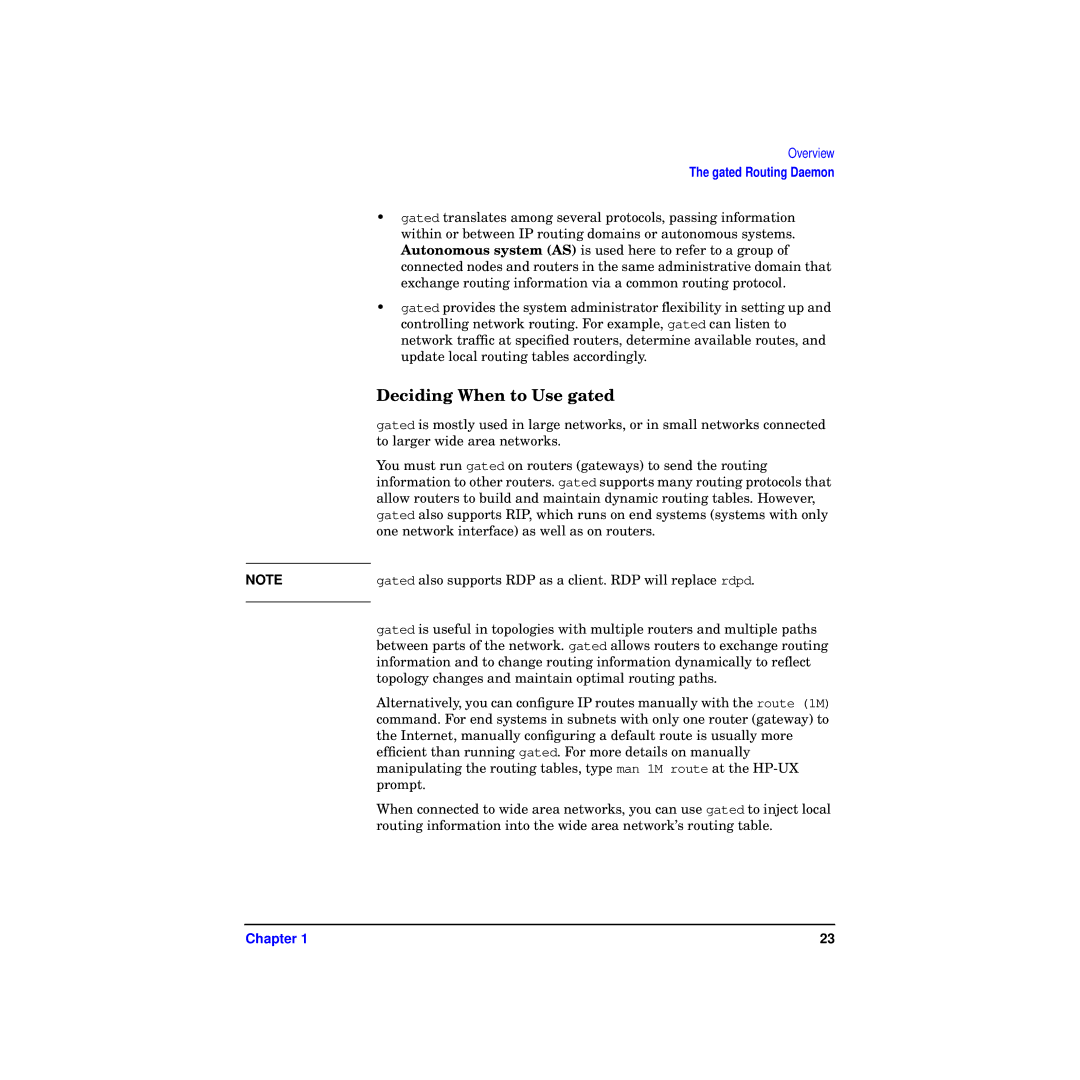
Overview
The gated Routing Daemon
•gated translates among several protocols, passing information within or between IP routing domains or autonomous systems. Autonomous system (AS) is used here to refer to a group of connected nodes and routers in the same administrative domain that exchange routing information via a common routing protocol.
•gated provides the system administrator flexibility in setting up and controlling network routing. For example, gated can listen to network traffic at specified routers, determine available routes, and update local routing tables accordingly.
Deciding When to Use gated
gated is mostly used in large networks, or in small networks connected to larger wide area networks.
You must run gated on routers (gateways) to send the routing information to other routers. gated supports many routing protocols that allow routers to build and maintain dynamic routing tables. However, gated also supports RIP, which runs on end systems (systems with only one network interface) as well as on routers.
NOTE | gated also supports RDP as a client. RDP will replace rdpd. |
|
|
gated is useful in topologies with multiple routers and multiple paths between parts of the network. gated allows routers to exchange routing information and to change routing information dynamically to reflect topology changes and maintain optimal routing paths.
Alternatively, you can configure IP routes manually with the route (1M) command. For end systems in subnets with only one router (gateway) to the Internet, manually configuring a default route is usually more efficient than running gated. For more details on manually manipulating the routing tables, type man 1M route at the
When connected to wide area networks, you can use gated to inject local routing information into the wide area network’s routing table.
Chapter 1 | 23 |
